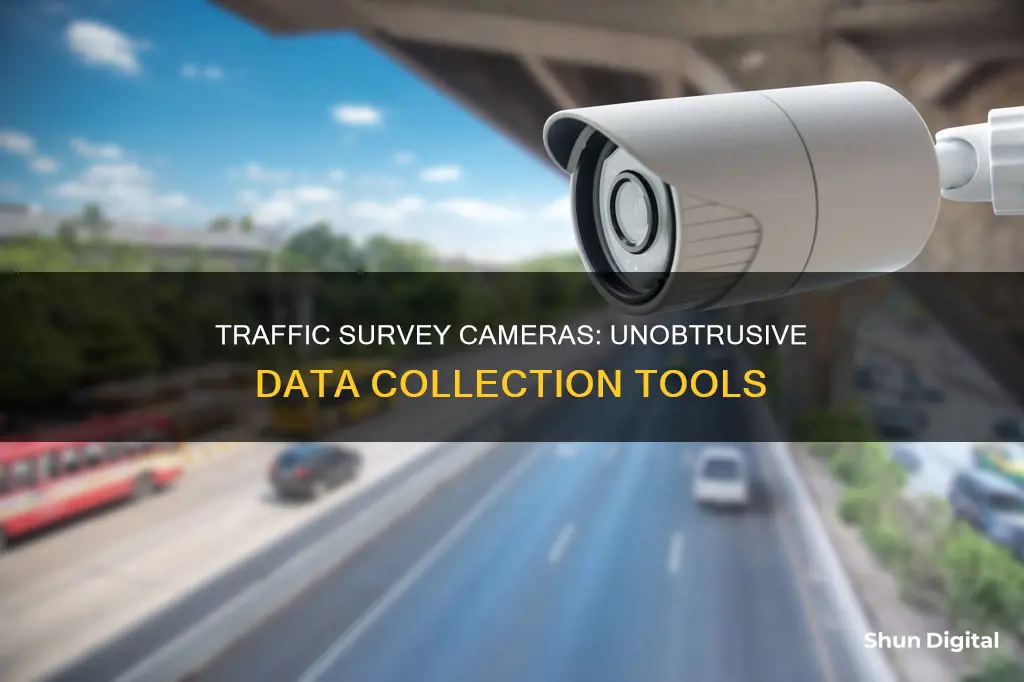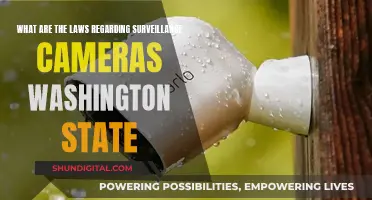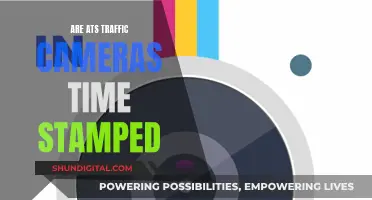
Traffic survey cameras are an essential tool for monitoring and managing traffic. They are video surveillance devices strategically mounted on roadways to capture real-time photos and videos of traffic flow, including vehicles and pedestrians. These cameras are typically placed at intersections, on-ramps, and other areas with heavy or congested traffic, providing a comprehensive view of the traffic situation. The data collected by these cameras is transmitted to a central management room, where it is analysed to make informed decisions about traffic management and road safety.
Traffic survey cameras have several benefits, including optimising traffic flow by providing real-time data, improving road safety by identifying potential hazards and deterring reckless driving, and enforcing traffic regulations by capturing evidence of violations. Additionally, they contribute to the development of smart cities by providing valuable data for analytics and intelligent transportation systems.
There are different types of traffic survey cameras, including red light cameras, speed cameras, and traffic sensor cameras, each serving a specific purpose in maintaining order and safety on the roads.
| Characteristics | Values |
|---|---|
| Purpose | To monitor traffic flow and conditions, detect violations, and improve road safety |
| Installation | Mounted on poles, bridges, or other structures at strategic locations such as intersections, on-ramps, and areas with heavy or congested traffic |
| Functionality | Captures real-time photos and videos, detects speed, records incidents, and provides data for analysis and decision-making |
| Technology | May include motion sensors, night vision, infrared technology, and artificial intelligence for license plate recognition |
| Data Usage | Data is transmitted to a control center for real-time monitoring and analysis, and can be used as evidence |
| Types | Red light cameras, speed cameras, traffic light sensor cameras, automated number plate recognition (ANPR) cameras |
What You'll Learn

Traffic survey cameras are a type of video surveillance
The primary purpose of traffic survey cameras is to assist authorities in enforcing traffic laws, identifying violations, and responding promptly to incidents. The data captured by these cameras can be used for planning and decision-making related to traffic management and road safety measures. They also help in optimising traffic flow by providing real-time information about on-site traffic conditions, allowing authorities to modify traffic alerts and routing.
Traffic survey cameras can be categorised into two main types: automatic enforcement cameras and non-enforcement cameras. Automatic enforcement cameras, such as red-light cameras and speed cameras, are used for issuing tickets and violations. On the other hand, non-enforcement cameras, like traffic sensor cameras and automated number plate recognition (ANPR) cameras, are not tied to any enforcement system and are used for monitoring traffic flow, detecting congestion, and collecting data for analytics and planning purposes.
The use of traffic survey cameras has sparked debates around privacy and government surveillance. While some argue that these cameras invade privacy and are used for revenue generation, others emphasise their effectiveness in reducing accidents, improving road safety, and optimising traffic management.
Camera Care: Essential Maintenance for Optimal Performance
You may want to see also

They are often used to measure the volume of traffic
Traffic survey cameras are often used to measure the volume of traffic. These cameras are strategically placed at vantage points along roads, such as traffic lights, overpasses, or tall buildings, to capture real-time photos and videos of the roads. By providing a comprehensive view of traffic flow and conditions, they assist authorities in maintaining order, enforcing traffic laws, and ensuring overall road safety.
One of the primary purposes of traffic survey cameras is to monitor traffic volume and congestion. These cameras are typically mounted on poles, bridges, or other structures, especially at intersections, on-ramps, and areas prone to heavy or congested traffic. The recorded data offers valuable insights for planning and decision-making regarding traffic management and road safety measures.
Traffic survey cameras are often equipped with advanced features to effectively measure traffic volume. Some cameras have motion sensors that trigger recording when movement is detected, ensuring continuous surveillance. Additionally, these cameras usually have night vision capabilities, enabling clear images even in low-light conditions, thus facilitating round-the-clock monitoring.
The data captured by traffic survey cameras is transmitted in real-time to a central management room, where it is analysed by traffic engineers or law enforcement personnel. This allows for prompt responses to incidents, such as accidents or disruptions, and aids in enforcing traffic regulations.
By providing accurate and timely information about traffic volume and flow, these cameras play a crucial role in optimising traffic routing and reducing congestion. This, in turn, enhances travel efficiency and improves road safety by deterring reckless driving and identifying traffic violations.
In summary, traffic survey cameras are essential tools for measuring and managing traffic volume. They provide authorities with valuable data, enabling them to make informed decisions, enforce traffic laws, and ultimately improve the safety and efficiency of our road networks.
Traffic Cameras: Effective or Invasive?
You may want to see also

They can be used to monitor traffic speeds and conditions
Traffic survey cameras, also known as traffic monitoring cameras, are a type of video surveillance device mounted on roadways to capture real-time photos and videos of traffic flow. They are typically placed at complex intersections, roads with heavy congestion, or areas with extreme weather conditions. These cameras are connected to a control centre where traffic engineers and law enforcement personnel can monitor traffic flow, detect accidents, and enforce traffic laws.
Traffic survey cameras can be used to monitor traffic speeds and conditions in several ways:
- Speed detection: Some traffic survey cameras are equipped with sensors that can detect the speed of vehicles. This allows authorities to enforce speed limits and issue tickets to speeding drivers.
- Real-time monitoring: Traffic survey cameras provide a comprehensive view of traffic flow and conditions in real time. This helps authorities to detect accidents, identify traffic violations, and respond promptly to incidents.
- Data gathering: The data captured by traffic survey cameras can be used for planning and decision-making regarding traffic management and road safety measures. This includes identifying areas prone to congestion and implementing measures to optimise traffic flow.
- Incident response: Traffic survey cameras can improve incident response times by providing real-time images and alerts to authorities, allowing them to assess situations and take appropriate action quickly.
- Deterring reckless driving: The presence of traffic survey cameras can act as a deterrent to reckless driving. The cameras can help identify violators, and the footage captured can be used as evidence of traffic violations.
- Reducing traffic incidents: While traffic survey cameras cannot prevent collisions, they can help deter people from breaking traffic rules and encourage adherence to speed limits, thereby reducing the risk of accidents.
Connecting a Document Camera: A Step-by-Step Guide
You may want to see also

They can be used to issue tickets and violations
Traffic survey cameras, also known as traffic monitoring cameras, are an essential tool for road safety and traffic management. These cameras are strategically placed to capture real-time data and images of roads and intersections, aiding authorities in enforcing traffic laws, identifying violations, and responding to incidents promptly. One of their key functions is the ability to issue tickets and violations, particularly for red-light and speeding offences.
Red-light traffic cameras are one of the most well-known types of traffic cameras. They are typically installed at busy intersections to capture motorists who enter an intersection during a red light. These cameras have sensors that detect when a vehicle enters the intersection and take snapshots of the offending vehicle. They are often connected to an automated ticketing system that identifies the vehicle through its license plate and generates an incident report. Red-light cameras play a crucial role in reducing fatal car accidents and encouraging drivers to obey traffic signals.
Speed cameras, on the other hand, are designed to detect and penalize speeding violations. They can be found on highways, residential areas, and roads with a history of speeding complaints. These cameras use radar technology to determine a vehicle's speed and capture images if it is exceeding the speed limit. Similar to red-light cameras, speed cameras can also issue tickets automatically, which are then sent to the vehicle owner.
Both red-light and speed cameras serve as a deterrent to reckless driving and help enforce traffic regulations. They provide valuable evidence of traffic violations, which can be used by law enforcement to identify and penalize offenders. The presence of these cameras encourages drivers to adhere to speed limits and traffic signals, contributing to safer roads and a reduction in accidents.
In addition to red-light and speed cameras, there are also fixed and mobile speed cameras. Fixed speed cameras are stationary and mounted on poles or structures, usually in areas with a history of speeding or near schools and intersections. Mobile speed cameras, on the other hand, are portable and can be mounted on vehicles or tripods, allowing for flexibility in their placement. Both types of cameras use sensors to detect speeding violations and capture images of the offending vehicles.
The use of traffic survey cameras for issuing tickets and violations is a critical aspect of road safety and traffic management. By enforcing traffic laws and penalizing violations, these cameras help deter reckless driving, improve road safety, and reduce the number of accidents.
Olympus Camera Battery Encoding: What's the Deal?
You may want to see also

They can be used to enforce traffic regulations
Traffic survey cameras, also known as traffic control or monitoring cameras, are an essential tool for enforcing traffic regulations and improving road safety. They are typically mounted on poles, bridges, or other structures at strategic locations, such as complex intersections, roads with heavy congestion, or areas with extreme weather conditions. These cameras provide a comprehensive view of traffic flow, allowing authorities to monitor and manage traffic effectively.
One of the primary ways traffic survey cameras enforce traffic regulations is by detecting and capturing violations. For example, red light cameras are triggered when a vehicle enters an intersection during a red light, while speed cameras use radar technology to identify vehicles exceeding the speed limit. These cameras are often linked to automated ticketing systems, issuing fines to offenders and helping to deter future violations.
In addition to red light and speed cameras, there are several other types of traffic survey cameras that aid in enforcing traffic regulations:
- Bus lane cameras: These cameras detect vehicles using bus lanes that are not authorised to do so and capture images for enforcement.
- Congestion charge cameras: These cameras identify vehicles inside a congestion charge area that have not paid the required fee.
- Toll booth cameras: These cameras capture vehicles proceeding through a toll booth without paying the toll.
- Turn cameras: Installed at intersections, these cameras identify vehicles making prohibited turns.
Beyond violation detection, traffic survey cameras also assist in enforcing traffic regulations by providing valuable data and evidence. They record real-time footage, which can be used to identify traffic violations and determine liability in accidents. This data also aids in urban planning, helping cities make informed decisions about traffic management and road safety improvements.
Furthermore, traffic survey cameras can be linked to a central control centre, where law enforcement personnel can monitor traffic flow, detect accidents, and take appropriate action. This real-time monitoring enables authorities to respond promptly to incidents and maintain order on the roads.
In summary, traffic survey cameras play a crucial role in enforcing traffic regulations by capturing violations, providing data and evidence, and facilitating timely incident response. Their presence helps deter rule-breaking, improve road safety, and optimise traffic flow in cities.
Close Focus Photography: Capturing Tiny Details with Cameras
You may want to see also







